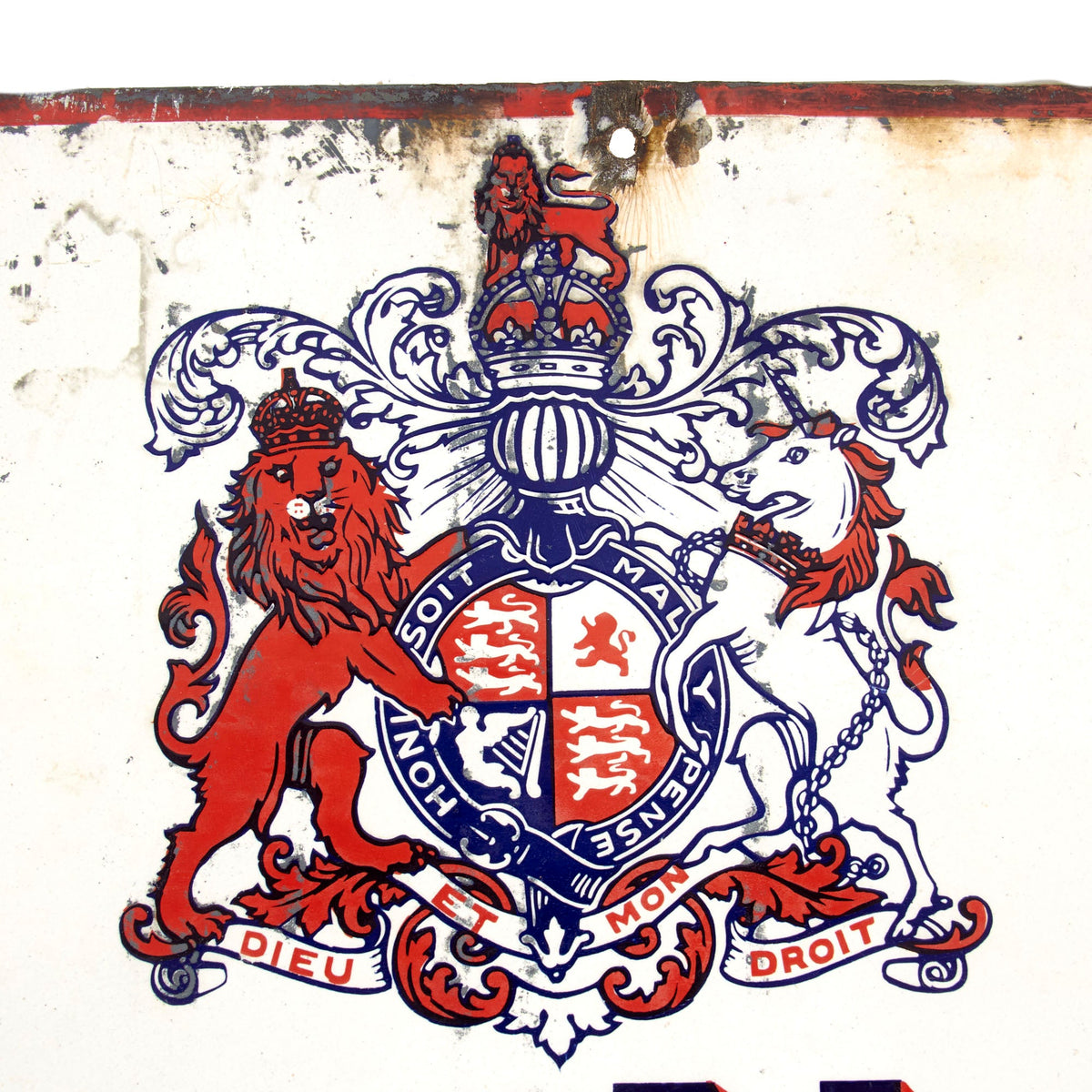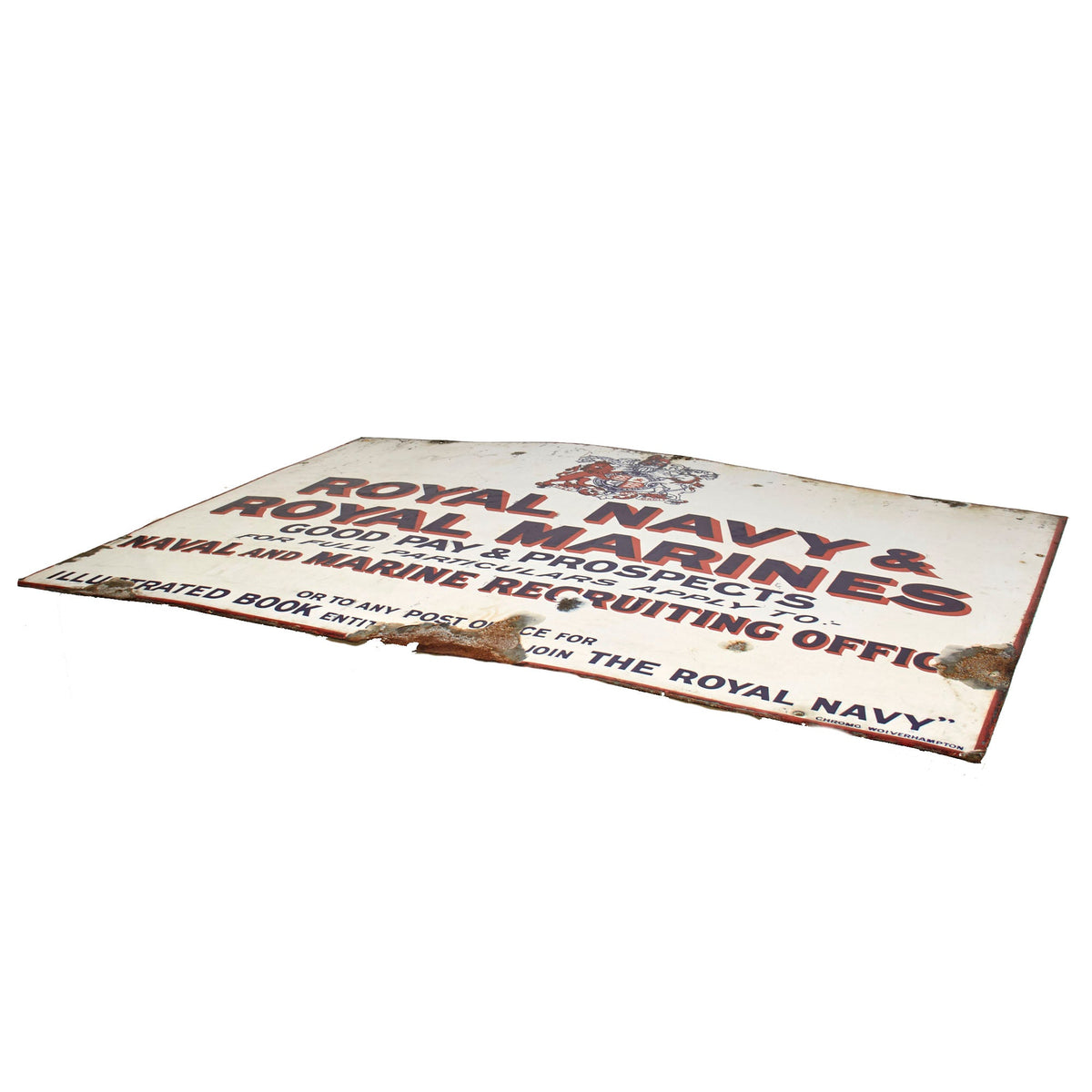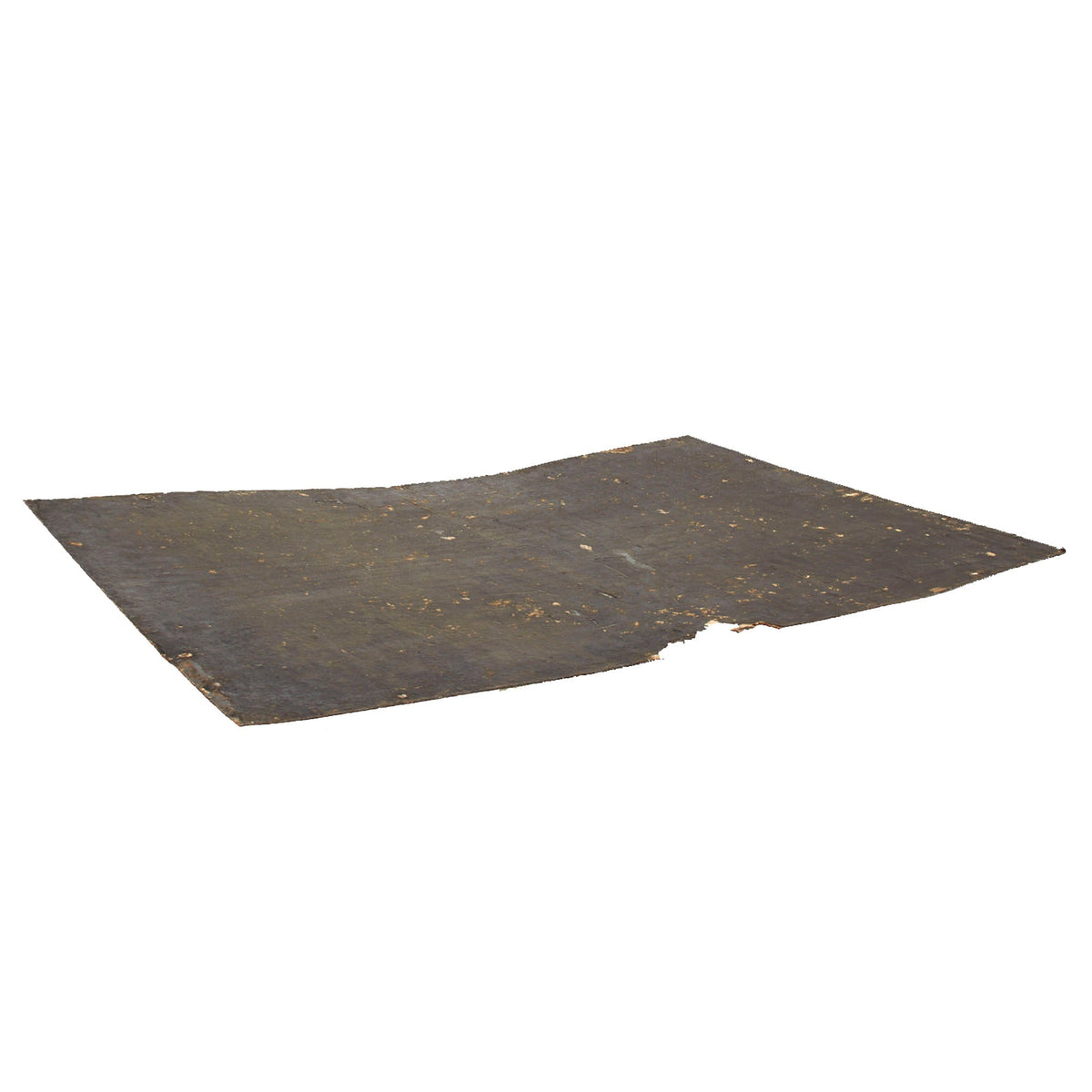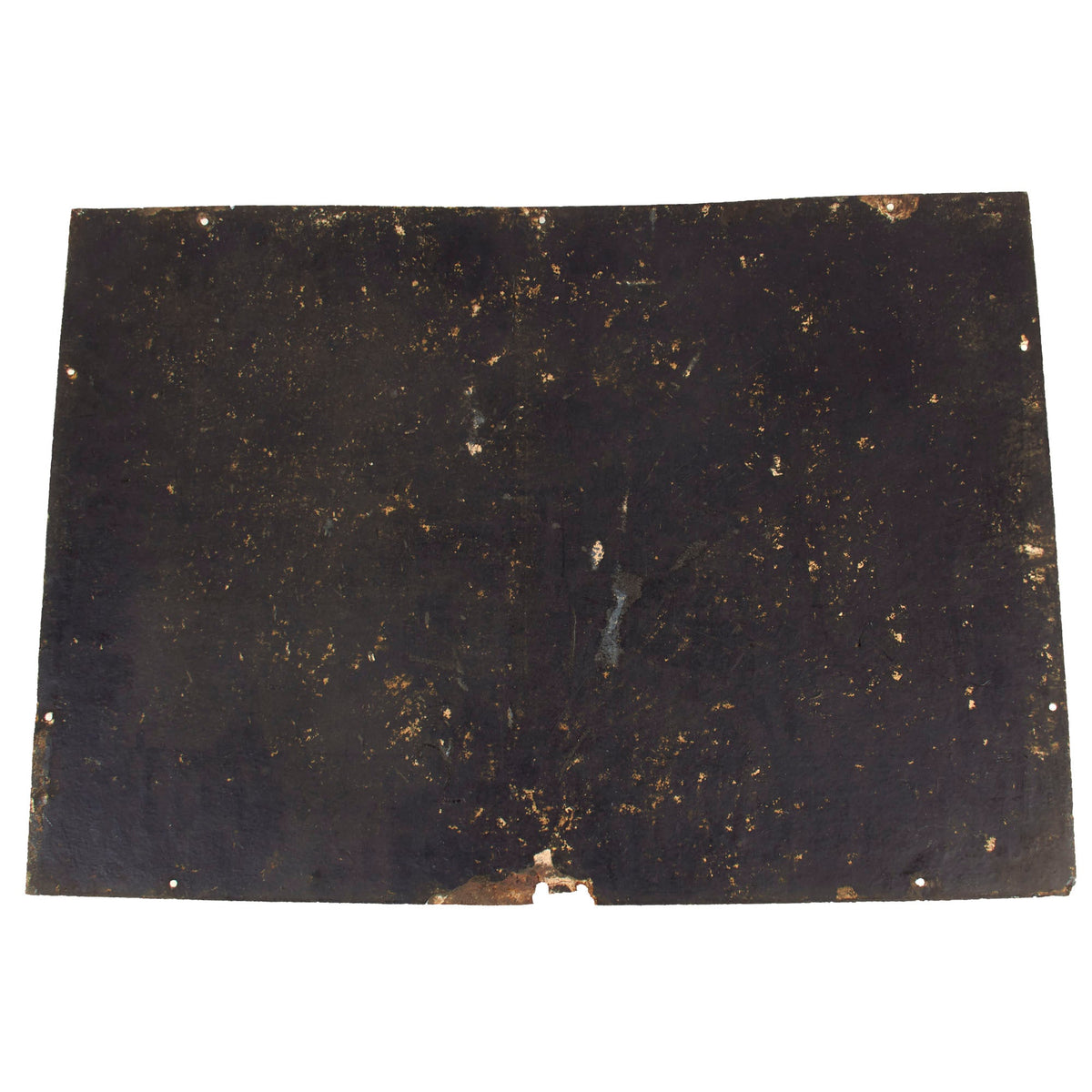Original British WWI Era British Royal Marines Porcelain Recruitment Sign – 24” x 34” Original Items
$ 595,00 $ 178,50
Original Item: Only One Available. Signs made from enamel or porcelain were one of the most durable and robust. Also, their weather-resistance made them a favorite of gas and service stations whose signs are often exposed to the elements. Its inherent strength also made it a perfect canvas for the often bold and colorful illustrations as it would age incredibly well. Today, enamel and porcelain signs are one of the most common and popular collectibles for both petroliana collectors and art-deco enthusiasts.
This wonderful example stood the test of time and has retained much of the original porcelain with areas of loss and damage mostly towards the bottom and sides. The areas that chipped away are now oxidized but do not subtract from the beauty of it. There are holes still present for means of hanging the sign.
A lovely example ready for further research and display.
The history of the Royal Marines began on 28 October 1664 with the formation of the Duke of York and Albany’s Maritime Regiment of Foot soon becoming known as the Admiral’s Regiment. During the War of the Spanish Succession the most historic achievement of the Marines was the capture of the mole during the assault on Gibraltar (sailors of the Royal Navy captured the Rock itself) in 1704. On 5 April 1755, His Majesty’s Marine Forces, fifty Companies in three Divisions, headquartered at Portsmouth, Chatham and Plymouth, were formed by Order of Council under Admiralty control.
The Royal Marine Artillery was formed as an establishment within the British Royal Marines in 1804 to man the artillery in bomb vessels. As their coats were the blue of the Royal Regiment of Artillery, this group was nicknamed the “Blue Marines” and the Infantry element, who wore the scarlet coats of the British infantry, became known as the “Red Marines”. During the Napoleonic Wars the Royal Marines participated in every notable naval battle on board the Royal Navy’s ships and also took part in multiple amphibious actions. Marines had a dual function aboard ships of the Royal Navy; routinely, they ensured the security of the ship’s officers and supported their maintenance of discipline in the ship’s crew, and in battle, they engaged the enemy’s crews, whether firing from positions on their own ship, or fighting in boarding actions.
During the First World War, in addition to their usual stations aboard ship, Royal Marines were part of the Royal Naval Division which landed in Belgium in 1914 to help defend Antwerp and later took part in the amphibious landing at Gallipoli in 1915. The Royal Marines also took part in the Zeebrugge Raid in 1918. During the Second World War the Infantry Battalions of the Royal Marine Division were re-organised as Commandos, joining the British Army Commandos. The Division command structure became a Special Service Brigade command. The support troops became landing craft crews and saw extensive action on D-Day in June 1944.
The Falklands War provided the backdrop to the next action of the Royal Marines. Argentina invaded the islands in April 1982. A British task force was immediately dispatched to recapture them, and given that an amphibious assault would be necessary, the Royal Marines were heavily involved. The troops landed at San Carlos Water at the western end of East Falkland, and proceeded to “yomp” across the entire island to the capital, Stanley, which fell on 14 June 1982.
Fast Shipping with Professional Packaging
Thanks to our longstanding association with UPS FedEx DHL, and other major international carriers, we are able to provide a range of shipping options. Our warehouse staff is expertly trained and will wrap your products according to our exact and precise specifications. Prior to shipping, your goods will be thoroughly examined and securely secured. We ship to thousands clients each day across multiple countries. This shows how we're dedicated to be the largest retailer on the internet. Warehouses and distribution centres can be located throughout Europe as well as the USA.
Note: Orders with more than one item will be assigned a processing date depending on the item.
Before shipping before shipping, we'll conduct a thorough inspection of the items you have ordered. Today, the majority of orders will be delivered within 48 hours. The delivery time will be between 3-7 days.
Returns
The stock is dynamic and we cannot completely manage it because multiple stakeholders are involved, including our factory and warehouse. So the actual stock may alter at any time. It's possible that you may not receive your order once the order has been made.
Our policy is valid for a period of 30 days. If you don't receive the product within 30 days, we are not able to issue a refund or an exchange.
You can only return an item if it is unused and in the same state as the day you received it. You must have the item in its original packaging.
Related products
Uncategorized
Uncategorized
Uncategorized
Uncategorized
Uncategorized
Uncategorized
Uncategorized
Uncategorized
Armored Burgonet Helmet & Polearm from Scottish Castle Leith Hall Circa 1700 Original Items
Uncategorized
Band of Brothers ORIGINAL GERMAN WWII Le. F.H. 18 10.5cm ARTILLERY PIECE Original Items
Uncategorized
Armoured Fighting Vehicles of the World: AFVs of World War One (Hardcover Book) New Made Items
Uncategorized
Uncategorized
Uncategorized
Uncategorized
Uncategorized
Uncategorized
Uncategorized












































































